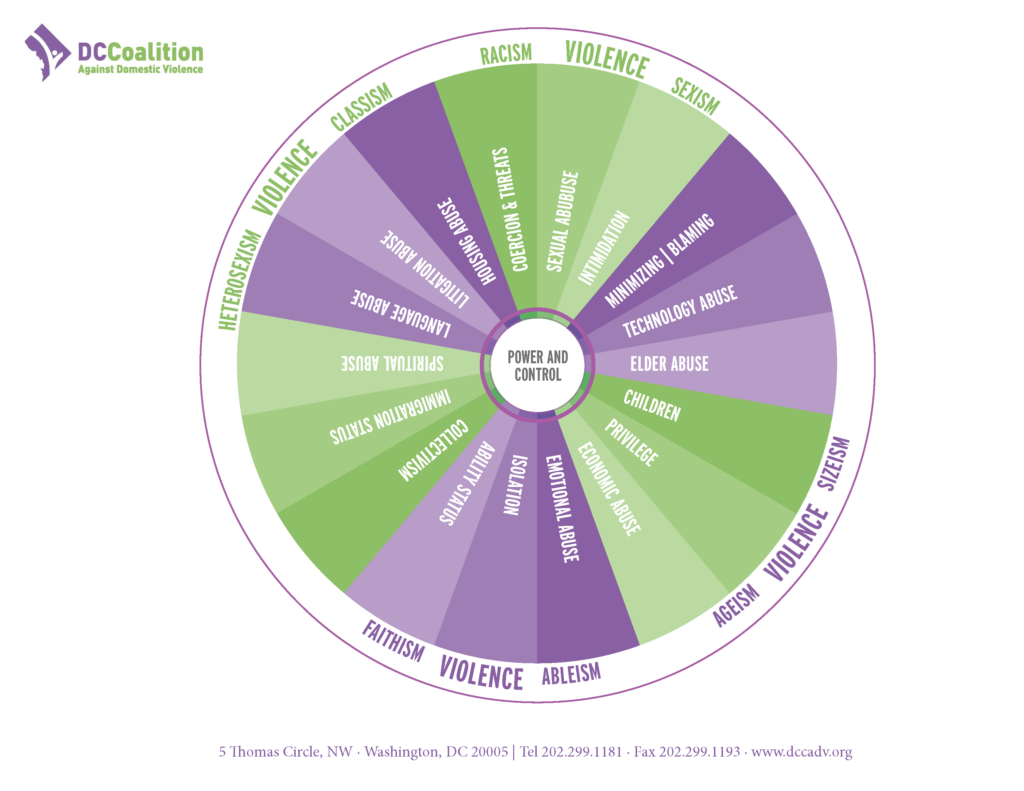How to Recognize Red Flags in a Relationship
The line between deep affection and controlling behavior can sometimes become blurred in relationships. Relationships—whether between intimate partners, parents, children, or caregivers and those they care for—should be based on mutual respect, kindness, and grace. But how can we distinguish between healthy, unhealthy, and potentially abusive relationships?
Recognizing early signs of abuse in a relationship is a crucial first step in ensuring that everyone we care about, including ourselves, is in healthy, supportive partnerships.
Early identification protects survivors and provides an opportunity for the abuser to seek help, potentially reducing the perpetuation of abusive cycles. Understanding these early signs of abuse can similarly help communities combat domestic violence, promoting healthier relationships and fostering a safer society.! And wherever you or your loved ones may be in a relationship, it is never too late to seek help.
When someone begins to notice shifts in communication, control, or emotional safety, having the right guidance can make all the difference, and turning to the attorneys at LaFrance Family Law can offer clarity on protective measures, legal options, and the steps needed to secure a safer future. By seeking informed help, survivors and their families can navigate difficult decisions with confidence, ensuring their rights, safety, and well-being remain at the forefront during emotionally challenging times.
This guide outlines critical red flags in behavior that may indicate abusive tendencies, aiming to empower everyone with knowledge and encourage you, your friends, and anyone who may be in an abusive relationship to take proactive steps toward personal safety.
What is the Basis of Abusive Behaviors? While healthy behaviors make us feel good and secure, unhealthy behaviors can leave us feeling annoyed, upset, and frustrated. Abusive behaviors can make someone feel controlled, fearful, paranoid, uneasy, and anxious, among other strong and alienating emotions. Abusive behavior is a consistent pattern of behavior that seeks to establish control over another person and create and maintain an unequal partnership.
Power and Control Wheel To help depict power and control, organizations across the victim advocate space have created “Power and Control Wheels.” Each spoke of the wheel represents abusive behaviors that an abuser could use in a relationship to establish power and maintain control. We will explore some of these in the section “11 Red Flags to Watch Out For.”
11 Red Flags to Watch Out For
Recognizing abusive behavior is not always straightforward, as behaviors can change, and there can even be a mix of healthy and unhealthy behaviors in a relationship.
However, certain behaviors should prompt concern. Watch out for these red flags:
1. Excessive Jealousy
While occasional jealousy is common, excessive jealousy transcends mere insecurity and can indicate more profound, dangerous control issues.
Examples of excessive jealousy:
A partner always insists on knowing your whereabouts or becomes angry when you interact with others.
Falsely accuses you of cheating or says you are not spending enough time with them.
They do not support your accomplishments and make you feel bad about them.
2. Controlling Behavior
Abusers often need to feel in control of their partners.
Examples of controlling behavior:
Dictating who you can see and what you can wear.
Deciding how you spend your money or taking your money and denying you access to it.
Isolating you from friends and family.
3. Unrealistic Expectations
Abusers may expect their partners to meet unreasonable standards, fulfill every need, and/or correct all problems.
Examples of unrealistic expectations:
Using phrases like “you’re the only person who can help me” to impose pressure.
Threatening self-harm if you leave them.
Expecting you to pay all the bills without providing any other financial support.
4. Isolation
Isolating a person from their family and friends is a common strategy used by abusers to gain control.
Examples of abusive isolation:
Criticizing your closest friends and family and attributing any relationship problems to your interactions with them.
Requiring you to get your partner’s permission to do daily tasks like going to the grocery store and going out at night with friends.
Expecting you to spend most of your time with them, causing you to cancel plans with friends and family.
5. Blaming Others for Problems
An abuser will often deflect personal responsibility by blaming others for their problems or failures.
Examples of this behavior:
Claiming someone is always ‘out to get them’ if they are chronically unemployed.
Blaming you for relationship issues.
Saying things like “Look what you made me do” after fits of anger or rage.
6. Hypersensitivity
An abuser can be extremely sensitive about themselves, especially concerning perceived criticisms.
Examples of hypersensitivity:
Reacting with rapid anger or resentment to comments others would not find offensive, such as “I didn’t have time to make dinner.”
7. Cruelty to Animals or Children
This red flag is particularly alarming. Abusers may show cruelty, indifference, or impatience to animals or children, which often predicts how they will treat their partners.
Examples of animal or child abuse:
Withholding food as punishment for long periods.
Keeping children or animals confined in small spaces without bathroom access.
Displaying aggressive behavior such as shoving and yelling.
8. Use of Non-consensual Force During Sex
Pressuring a partner into non-consensual sex acts without their full and willing consent, even if described as “playful,” is indicative of disrespect and s abuse. Recognize when sex is not fully consensual or when one partner feels coerced.
Examples of sexual coercion and non-consensual acts:
Proceeding with sexual acts without your explicit consent.
Using threats like blackmail or threatening to end the relationship to coerce you into sexual activity.
Making you feel guilty for not wanting to have sex that is only pleasurable for them.
9. Verbal Abuse
Verbal abuse is often the most accessible form of abuse to recognize and can be a precursor to physical violence. Over time, this can severely impact the victim’s self-esteem.
Examples of verbal abuse:
Yelling, name-calling, mocking, and threats.
Belittling through sarcastic comments, especially about insecurities you’ve expressed to them.
Saying things like “no one else will want to deal with you.”
10. Rigid Gender Roles
Abusers often have strict ideas about how a partner should behave based on traditional gender roles. This can be oppressive and is designed to keep the victim subservient.
Examples of rigid gender roles:
Beliefs like “women must be subservient to men” or “women can’t abuse men.”
Ideas that “men are supposed to control their women” and their behavior.
Expecting women to have children regardless of their personal choice.
11. Past Battering
A history of violence is the strongest predictor of future violence. If a person has been abusive in past relationships, they will likely continue unless there has been an active, successful intervention.
Domestic Violence Awareness and Support
Remember, noticing one or two of these behaviors on a single occasion may not signify abuse; however, a pattern consistently displayed over time should not be ignored. Trust your instincts, you are your own number one advocate, and seek help if you feel unsafe.
Recognizing these red flags can be the first step toward seeking help. If you or someone you know is experiencing these signs, it’s critical to reach out for support or provide resources when someone is ready to leave an abuser.
My Sister’s Place (MSP) provides a wide range of services for domestic violence survivors in Washington, D.C., including emergency shelter and transitional housing. Our priority is to support and empower survivors of domestic violence and their children by offering leadership and education to help continue building a supportive community. Additionally, MSP offers training, case consultation, and advocacy to engage communities in preventing violence and abuse.
For anyone who would like to support our work in empowering survivors of domestic violence in D.C. you may donate to My Sister’s Place, sign up to volunteer, or email us about setting up domestic violence training in your community. Help us end the cycle of domestic violence and empower everyone to build healthy lives and relationships.




